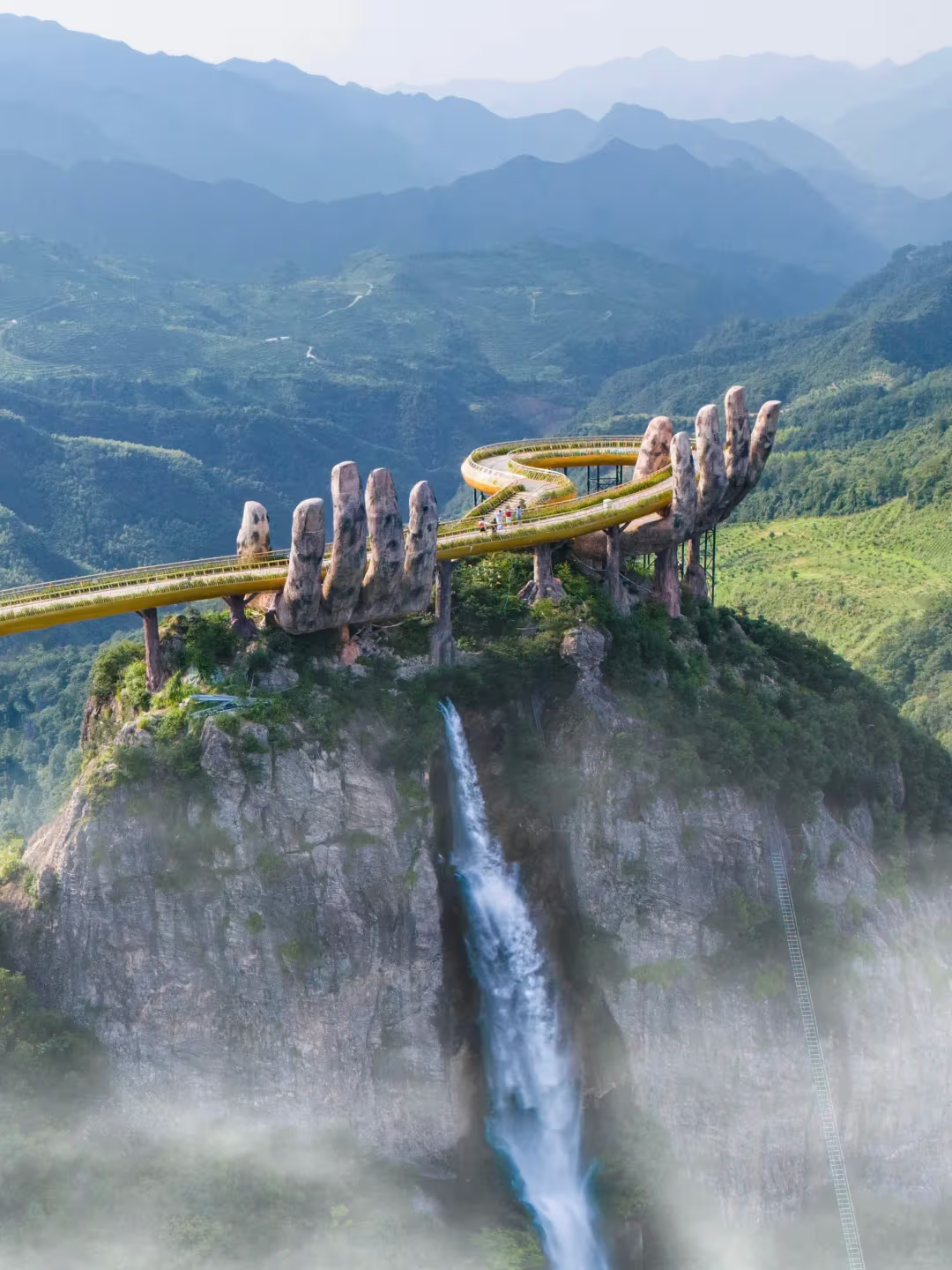I used to think West Lake had already showcased all of Hangzhou's beauty, until one rainy weekday when a friend said, “It’s astonishingly empty,” and led me to Yunqi Bamboo Path. That day, as we drove southwest, the drizzle fogged up the car windows, and I thought, “It’s just a bamboo forest, can it really be better than North Mountain Street?” After getting out of the car, the wind almost flipped our umbrella, and when I looked up, I was completely taken aback by the lush green in front of me: the bright green bamboo leaves shone like oil-slicked jade, raindrops bounced off the tips, and the entire valley turned into a breathing filter.
1. Hidden Beauty Outside West Lake
Around 10 AM that day, West Lake was probably packed with people lining up to take pictures of the “Broken Bridge,” while at the entrance of Yunqi Bamboo Path, even the ticket lady was yawning. The moment I scanned my ticket and stepped in, all I could hear was the sound of rain pattering on the bamboo leaves, my footsteps even had their own background music. On either side of the path were trees over a hundred years old, their rough bark draped with wet moss, like they were wearing a yellow-green sweater that felt cool to the touch. The air mingled with the scent of bamboo leaves, wet earth, and a hint of Longjing tea—the tea fields were right next to the deep bamboo forest.
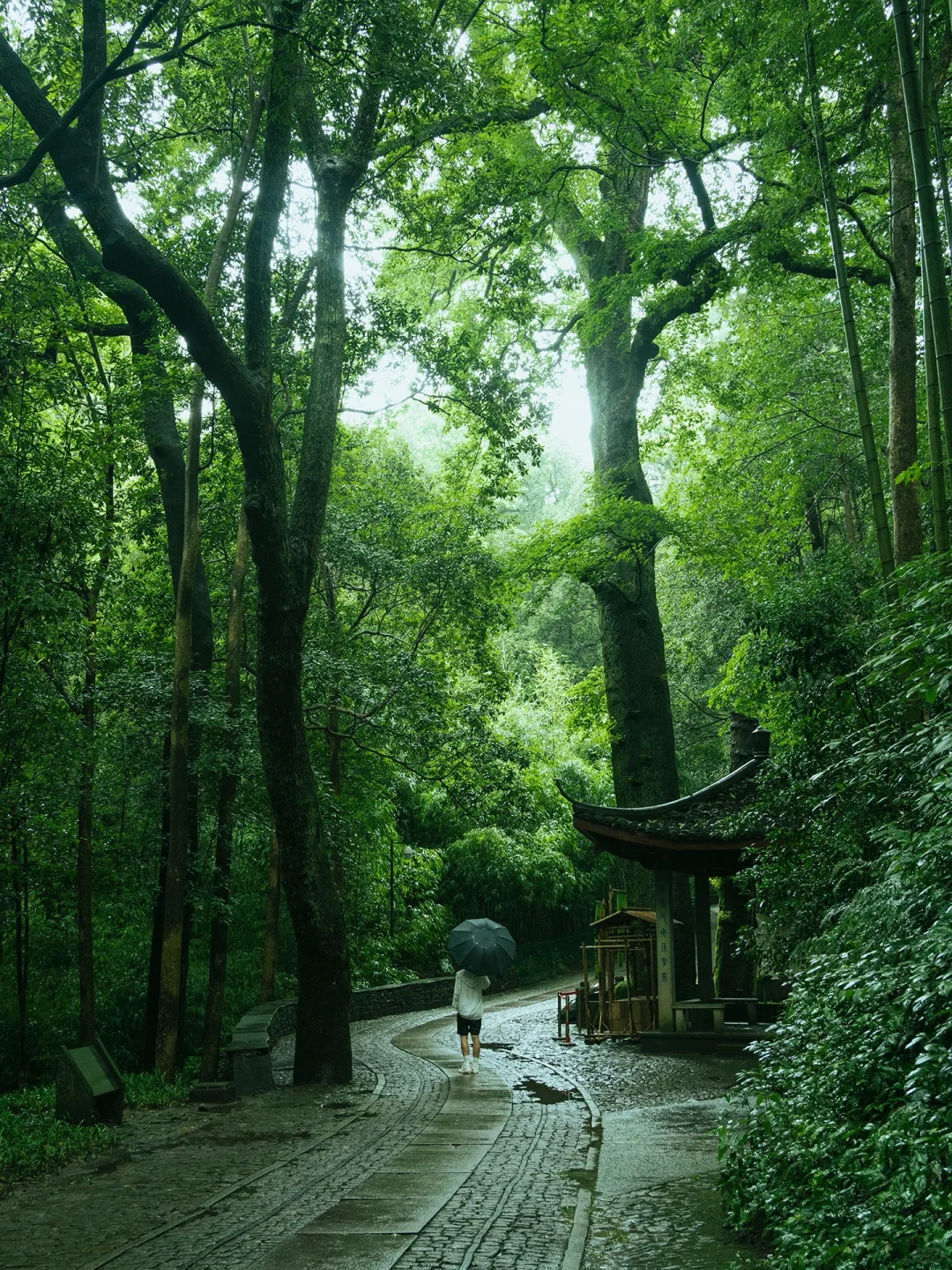 I dove deeper into the forest, silencing my phone, even the shutter sound felt like it would disturb the peacefulness. Halfway through, I realized that the “thousand-year-old trees” mentioned in the guide weren’t exaggerating: the trunks were so thick that two people couldn't wrap their arms around them, and looking up, I couldn't see the top, it felt like a natural giant umbrella shading half of the path. When the rain fell, the yellow moss on the trunks shimmered like gold, and every random shot looked soft and dreamy.
I dove deeper into the forest, silencing my phone, even the shutter sound felt like it would disturb the peacefulness. Halfway through, I realized that the “thousand-year-old trees” mentioned in the guide weren’t exaggerating: the trunks were so thick that two people couldn't wrap their arms around them, and looking up, I couldn't see the top, it felt like a natural giant umbrella shading half of the path. When the rain fell, the yellow moss on the trunks shimmered like gold, and every random shot looked soft and dreamy.
2. Easiest Ways to Get There
I took a taxi that day, but on the way back I found the bus was more convenient. Here’s a summary of different ways to get there:
| Method | Specific Routes | Time | Notes |
|---|
| Bus | Route 103, 121, 324 to “Yunqi Bamboo Path” station | About 40 min from city center | Directly at the entrance, 2 yuan for a card swipe |
| Driving | Navigate to “No. 8 Meiling South Road” | About 25 min from West Lake Scenic Area | 30 minutes free at the parking lot, 10 yuan/h thereafter |
| Biking | South from Lingyin Road | 12 km gentle slope | Recommend biking on a light rainy day, fewer people and beautiful scenery |
Key Point: If you're driving on weekends, try to arrive before 8:30 AM, or you'll be circling the parking lot forever.
3. Must-See Travel Tips
-
Best Time to Visit
On weekdays from 7:30 to 9:30 AM, the park has just opened, and even the cleaning staff aren’t on duty, so you can take portraits without anyone photobombing. On weekends, to grab some quality shots, it’s best to be at the gate by 7 AM; I’ve tried it a second time and by 8:30 AM there was already a long line.
-
Walking Route
Entrance → Xixin Pavilion → Thousand-Year-Old Tree → Douyun Pavilion → Exit, a total of 2.2 km wooden path
If you want to soak up more oxygen, you can avoid backtracking; behind Douyun Pavilion, there’s a small dirt path leading to the tea fields that takes you back to the parking lot.
-
Costs
Entry ticket is 8 yuan, can be bought on-site with a scan, half-price for students.
The tea fields are free; you can wander in to take pictures of the “Lonely Tree,” just don’t step on the tea plants.
4. Photo Spots for the Ancient Trees and Tea Fields
-
Thousand-Year-Old Tree
In the middle of the trunk, that yellow moss acts like a natural spotlight, so have your friends stand under the tree roots and shoot from below using portrait mode for some forest-themed epic photos.
Tip: The ground around the tree can be slippery, so it’s best to wear non-slip shoes.
-
Tea Field “Lonely Tree”
Across the street from the parking lot, there’s a whole patch of Longjing tea fields, with a lone camphor tree standing tall in the middle. I went back to the car at 1 PM to change clothes and happened to see a local lady hand-picking tea leaves. The scene of the tree in the distance combined with close-ups of her bamboo basket had a cinematic feel. There are low stone steps in front of the tree, so if someone sits there with the tree in the background, just zoom in 2x on your phone, no drone needed to get stunning shots.
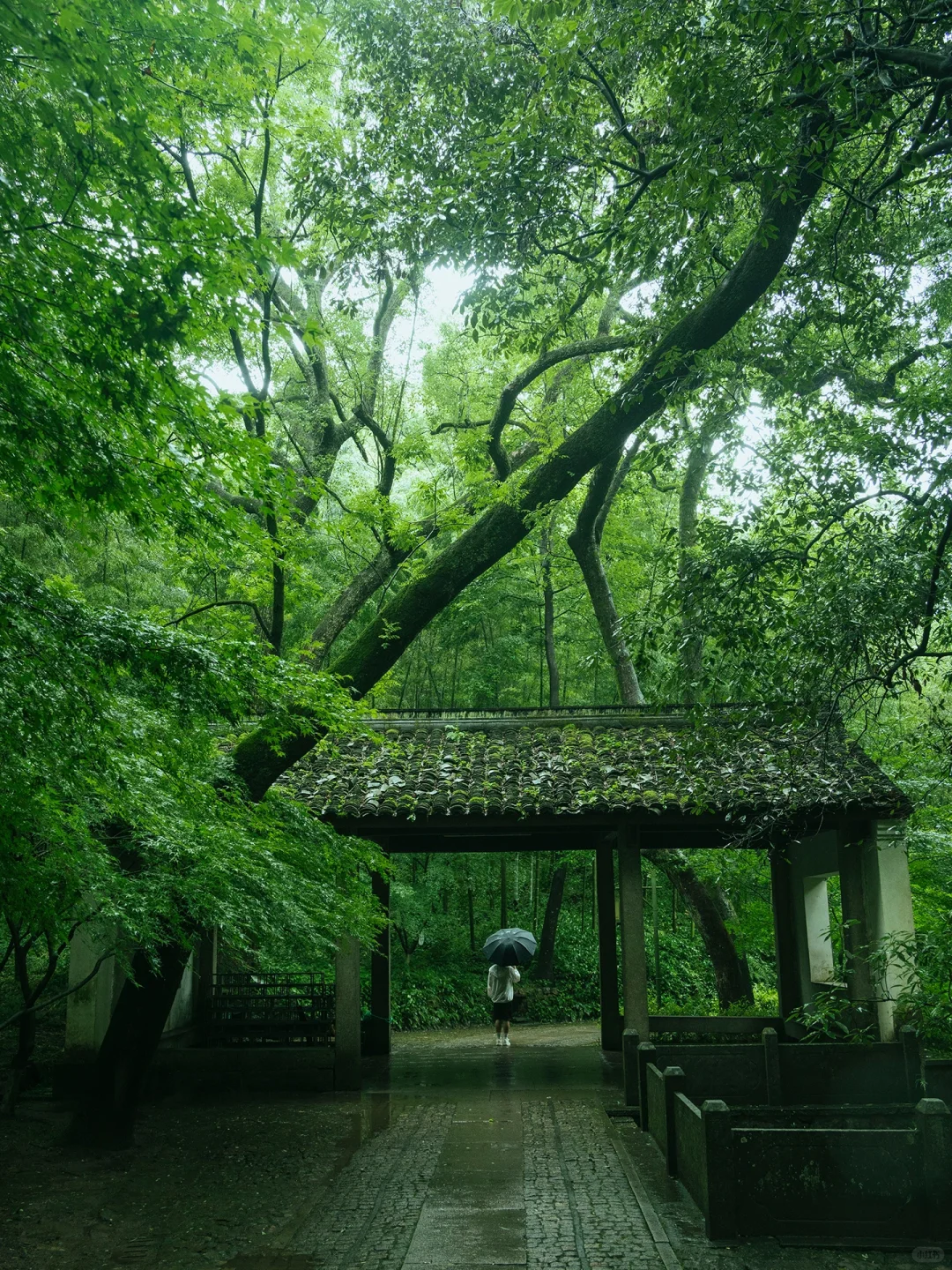
- Curve on the Path
About halfway through, there’s an “S” shaped downward slope with bamboo crossing over to form an arch, and if you stand below and look back, it feels like stepping into a green-light tunnel. Remember to close your umbrella for the shots during the rain; the droplets create a dreamy streak effect.
5. My Blood and Tears History with Mosquitoes
I got bitten three times within the first ten minutes, thinking mosquitoes wouldn’t be out in the cold, but they became crazier in the rain instead. I learned my lesson: long sleeves, long pants + mosquito repellent on my ankles and cuffs, and I made it through the whole path unscathed. There are black mosquitoes in the mountains; a bite can linger for a week, and that’s not just a scare—don’t shy away from the trouble.
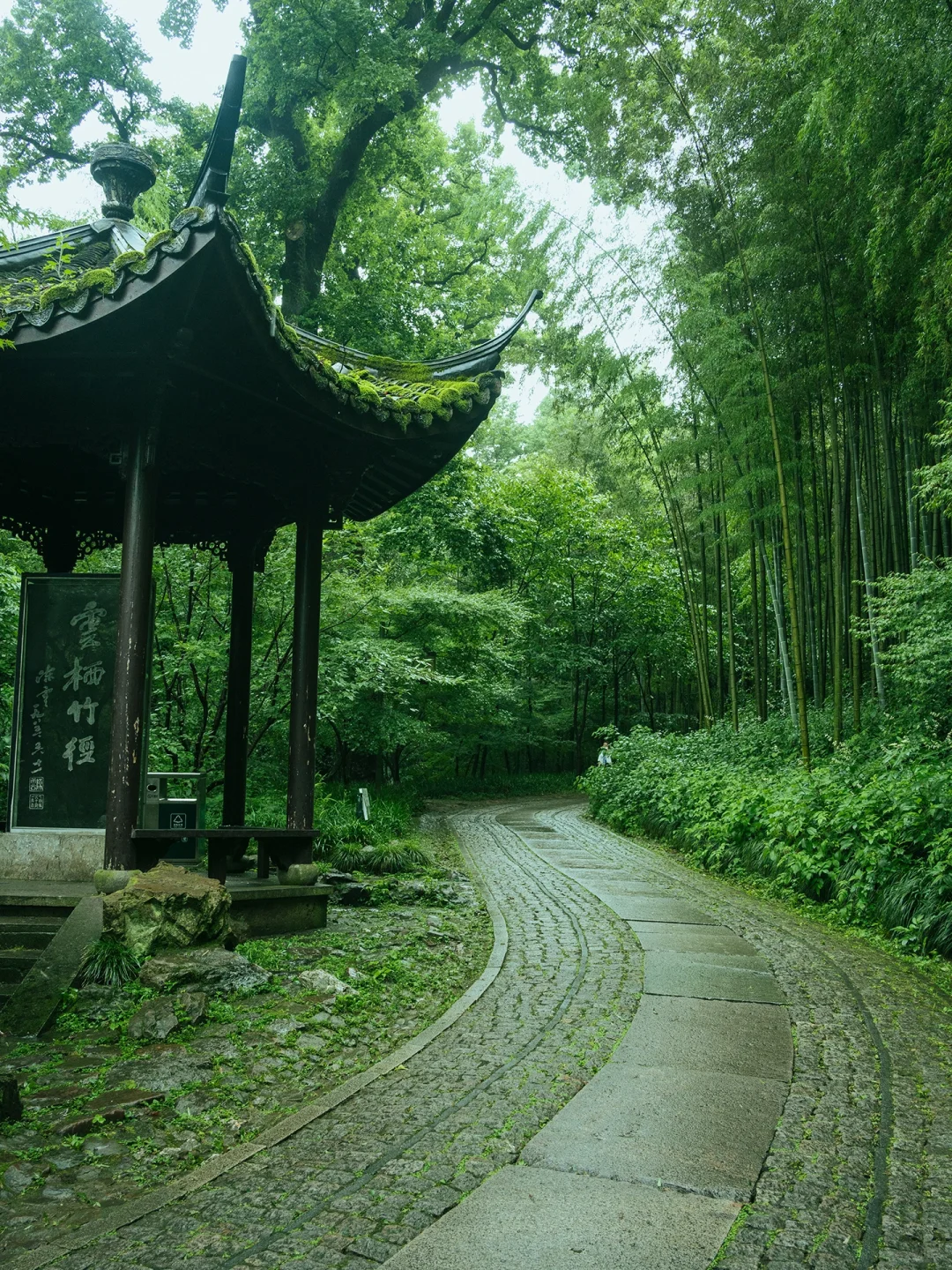
6. Tips to Pack and Take Away
- On rainy days, having non-slip shoes on the boardwalk is essential; sneakers on wet moss can lead to splits.
- If you want hot tea, take a left at the exit and walk 100 meters to a local farmer's stall, a cup of Longjing tea for 10 yuan, better than what you get at the scenic areas.
- When shooting videos, turn on anti-shake mode; the soft lighting and swaying bamboo shadows can easily get blurry.
- Lastly, be sure to check the end-of-service time for the bus schedule when you leave; the last bus for Route 103 is at 7:30 PM, don’t lose track of time and end up taking a taxi.
Plan Your China Trip
Explore local city guides and travel stories to build an authentic China itinerary.
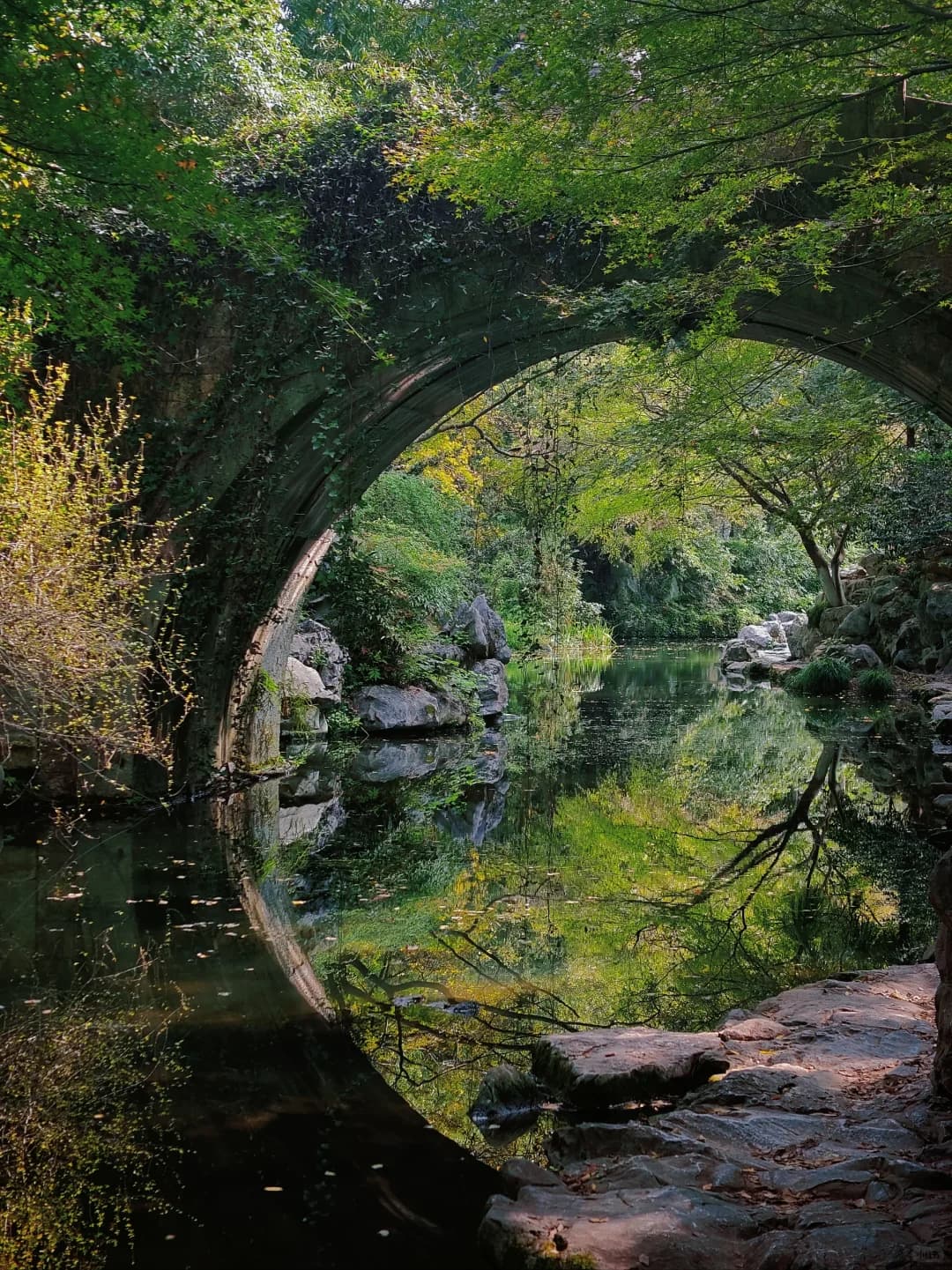

 I dove deeper into the forest, silencing my phone, even the shutter sound felt like it would disturb the peacefulness. Halfway through, I realized that the “thousand-year-old trees” mentioned in the guide weren’t exaggerating: the trunks were so thick that two people couldn't wrap their arms around them, and looking up, I couldn't see the top, it felt like a natural giant umbrella shading half of the path. When the rain fell, the yellow moss on the trunks shimmered like gold, and every random shot looked soft and dreamy.
I dove deeper into the forest, silencing my phone, even the shutter sound felt like it would disturb the peacefulness. Halfway through, I realized that the “thousand-year-old trees” mentioned in the guide weren’t exaggerating: the trunks were so thick that two people couldn't wrap their arms around them, and looking up, I couldn't see the top, it felt like a natural giant umbrella shading half of the path. When the rain fell, the yellow moss on the trunks shimmered like gold, and every random shot looked soft and dreamy.


